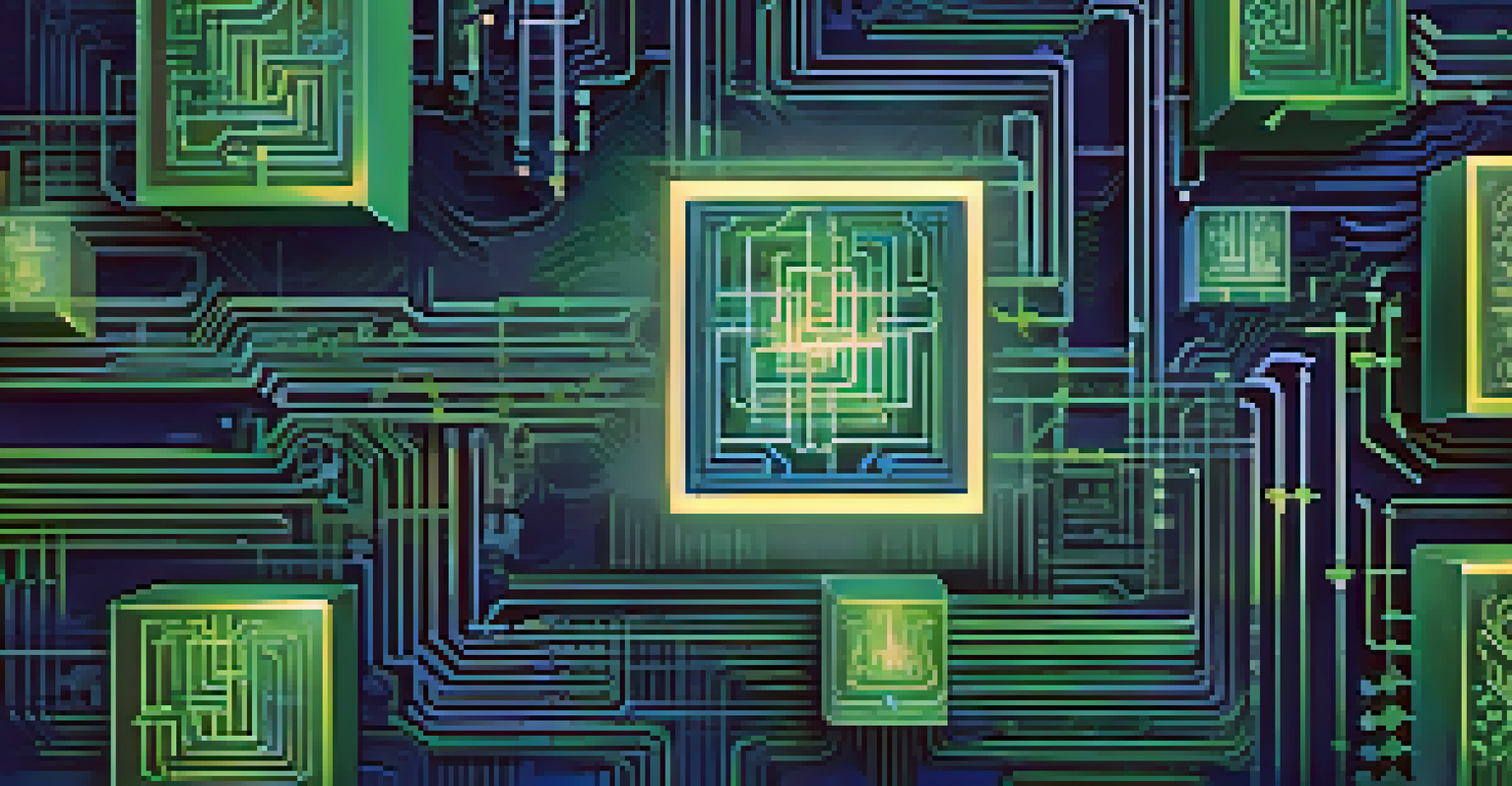Blockchain for Digital Rights Management: A New Frontier

Understanding Digital Rights Management and Its Challenges
Digital Rights Management (DRM) refers to technologies that protect copyright and control how digital content is used. Think of DRM as a digital lock on a door, ensuring that only authorized users can enter. However, traditional DRM systems often face issues like piracy, unauthorized sharing, and lack of transparency, leading to frustration for creators and users alike.
The greatest danger in times of turbulence is not the turbulence; it is to act with yesterday's logic.
One major challenge is the centralization of control, which can create bottlenecks and limit access to content. Imagine trying to unlock a door but finding out the key is held by a single entity; this can lead to delays and dissatisfaction. Additionally, current DRM solutions often require complicated licensing agreements that can confuse users and stifle creativity.
Another issue is the difficulty in tracking and enforcing rights across various platforms, often leading to disputes and revenue loss for creators. As digital content continues to proliferate, the need for a more efficient and transparent system becomes increasingly urgent. This is where blockchain technology enters the picture, offering a revolutionary approach to DRM.
How Blockchain Works: A Brief Overview
At its core, blockchain is a decentralized ledger that records transactions across multiple computers in a way that ensures security and transparency. Think of it as a digital notebook that everyone can see, but only certain people can write in. Each entry, or block, is linked to the previous one, creating a chain that is nearly impossible to alter without consensus from the network.

This decentralization means that no single entity has control over the entire system, which reduces the risk of fraud and increases trust among users. Imagine a community garden where everyone contributes and benefits equally; this is the essence of blockchain. Moreover, once information is recorded on the blockchain, it cannot be easily changed, ensuring the integrity of the data.
Blockchain Enhances Content Control
Blockchain technology offers transparency and security, empowering creators to maintain control over their digital content and receive fair compensation.
Smart contracts, another component of blockchain, allow for automated agreements that execute when specific conditions are met. Picture a vending machine: you insert money and select an item, and the machine automatically delivers your snack. In the context of DRM, smart contracts can streamline licensing processes, making transactions faster and more efficient.
The Benefits of Blockchain for Digital Rights Management
One of the most significant advantages of blockchain in DRM is its transparency. Every transaction is recorded on a public ledger, allowing creators and consumers to see who owns what and how content is being used. This visibility fosters trust between parties, reducing disputes and misunderstandings.
Innovation distinguishes between a leader and a follower.
Additionally, blockchain can simplify the licensing process. By using smart contracts, rights holders can automate permissions and payments, ensuring they receive fair compensation without the need for intermediaries. This is akin to having a personal assistant who handles all your scheduling and payments, freeing you up to focus on your creative work.
Furthermore, blockchain offers enhanced security against piracy and unauthorized use. Content can be encrypted and tracked, allowing creators to maintain control over their intellectual property. Just like a secure safe protects valuable items, blockchain safeguards digital assets, empowering creators to share their work with confidence.
Real-World Applications of Blockchain in DRM
Several companies are already leveraging blockchain technology to enhance digital rights management. For instance, platforms like Audius and Ujo Music are enabling musicians to share their work directly with fans while retaining control over their rights. This is similar to a direct farmer-to-consumer model, cutting out the middleman and ensuring that creators receive a fair share of revenue.
In the visual arts, projects like Verisart are using blockchain to authenticate and track the provenance of artworks, ensuring that artists receive recognition and payment for their creations. Imagine an artist's signature on a canvas; blockchain acts as a digital signature, confirming authenticity and ownership.
Smart Contracts Simplify Licensing
By utilizing smart contracts, blockchain can streamline the licensing process, automating permissions and payments for creators.
Moreover, the publishing industry is exploring blockchain to manage copyrights and royalties more effectively. By providing a transparent record of content usage, authors can ensure they are compensated fairly. This could revolutionize the way writers and publishers collaborate, leading to a more equitable and efficient system.
Challenges and Considerations in Implementing Blockchain for DRM
Despite its potential, implementing blockchain technology for digital rights management is not without challenges. One major hurdle is the need for widespread adoption across various platforms and industries. Without a common standard, it can be difficult for users to navigate multiple systems, much like trying to use different currencies while traveling.
Additionally, the complexity of blockchain technology can be intimidating for some users. It's essential to provide education and support to help individuals understand how to leverage this technology effectively. Think of it as teaching someone to ride a bike; it may seem daunting at first, but with guidance, it becomes second nature.
Finally, regulatory and legal frameworks need to evolve to accommodate blockchain-based DRM solutions. Policymakers must consider how to protect both creators and consumers while fostering innovation. It's a balancing act that requires collaboration between technology experts, legal professionals, and industry stakeholders.
The Future of Blockchain in Digital Rights Management
As blockchain technology continues to mature, its potential for transforming digital rights management is becoming increasingly clear. We may see a future where creators have greater control over their work and receive fair compensation for their efforts. Imagine a world where artists, writers, and musicians can thrive without worrying about piracy or unfair contracts.
Furthermore, ongoing advancements in blockchain technology, such as increased scalability and interoperability, could make it even more accessible for various industries. Just like the evolution of the Internet made online businesses viable, blockchain could pave the way for new business models in the creative sector.
Challenges in Blockchain Adoption
Widespread adoption of blockchain for DRM faces hurdles such as the need for common standards and user education to foster understanding and use.
Ultimately, the success of blockchain in DRM will depend on collaboration and innovation among all stakeholders. As we move forward, embracing this technology could unlock new opportunities for creators and consumers alike, fostering a more vibrant and equitable digital landscape.
Conclusion: Embracing a New Era in Digital Rights Management
In conclusion, blockchain presents a promising solution to the challenges faced by traditional digital rights management systems. With its transparency, security, and efficiency, it has the potential to empower creators and reshape the way we think about ownership and access to digital content. Imagine stepping into a future where artists are recognized and rewarded for their contributions without the barriers that currently exist.
As we navigate this new frontier, it is crucial for creators, consumers, and industry professionals to stay informed and engaged with the developments in blockchain technology. By working together, we can help create a more equitable and sustainable ecosystem that benefits everyone involved.

The journey to transforming digital rights management through blockchain is just beginning, and the possibilities are endless. Let's embrace this change and support a future where creativity flourishes, and creators receive the recognition they deserve.